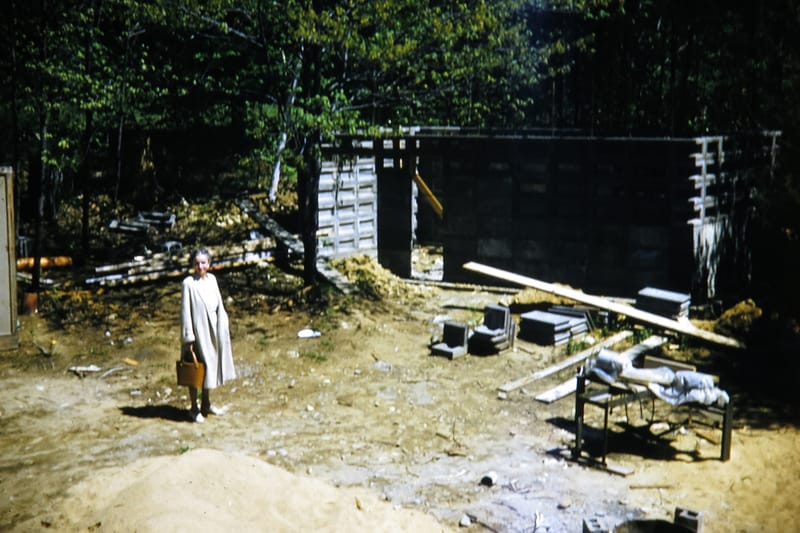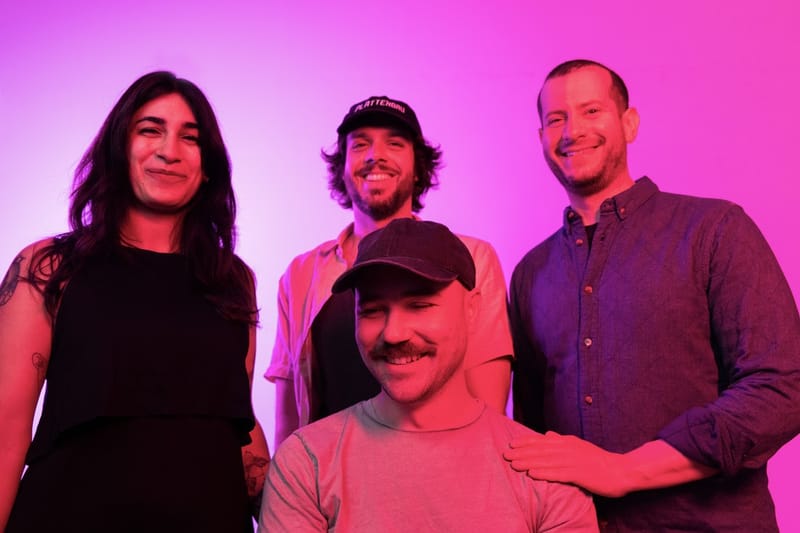Pedals & Pathways: Port City Bike Tours, Bike the North Country, Madonna del Ghisallo, etc.
Love the vernal equinox! Warmth, sunshine, longer days mean good bike riding days are not far off.


Navigating New Hampshire’s Urban Paths
Oh, sweet! I am loving me some delicious vernal equinox! Warmth, sunshine, longer days, and fuel oil bills that don’t empty my bank account! All of which means that some good bike riding days are not far off.
In this edition, let’s talk about:
- Port City Bike Tours
- Bike the North Country
- Madonna del Ghisallo
- Trips By Distance
- Non-Motorist Deaths
Port City Bike Tours

OK, this sounds like a lot of fun – guided bike tours in and around Portsmouth!
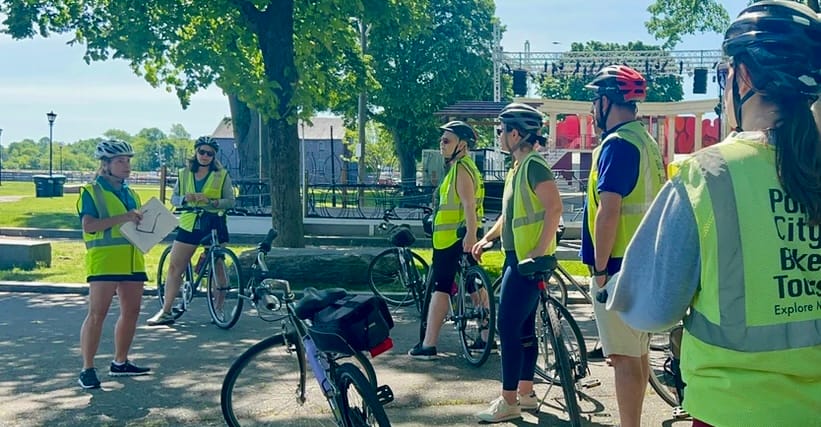
Port City Bike Tours offers daily bike tours along the New Hampshire seacoast. Visit the Atlantic Ocean, ride along the Piscataqua River and see the best hidden historic sites. You can reserve your spot now. Season Opens April 14th.
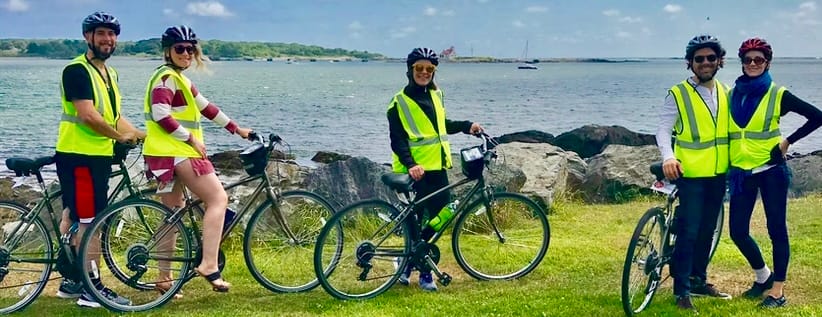
Things to Know:
- Tours include: City of Portsmouth, Islands and Harbor, Nature and Wildlife, Coast & Seaside
- Not every tour is offered every day. Check calendar for availability.
- Tours follow rules of the road and bike safety protocols. Unsure about which tour is right for you? Check out the Cycling Levels page.
- You only need to bring yourself and some comfortable clothing. The rest is handled for you, including photos.
- Tours will go out rain or shine unless the weather is too dangerous. If that happens, you’ll be called regarding rescheduling options.
- E-bikes are available.
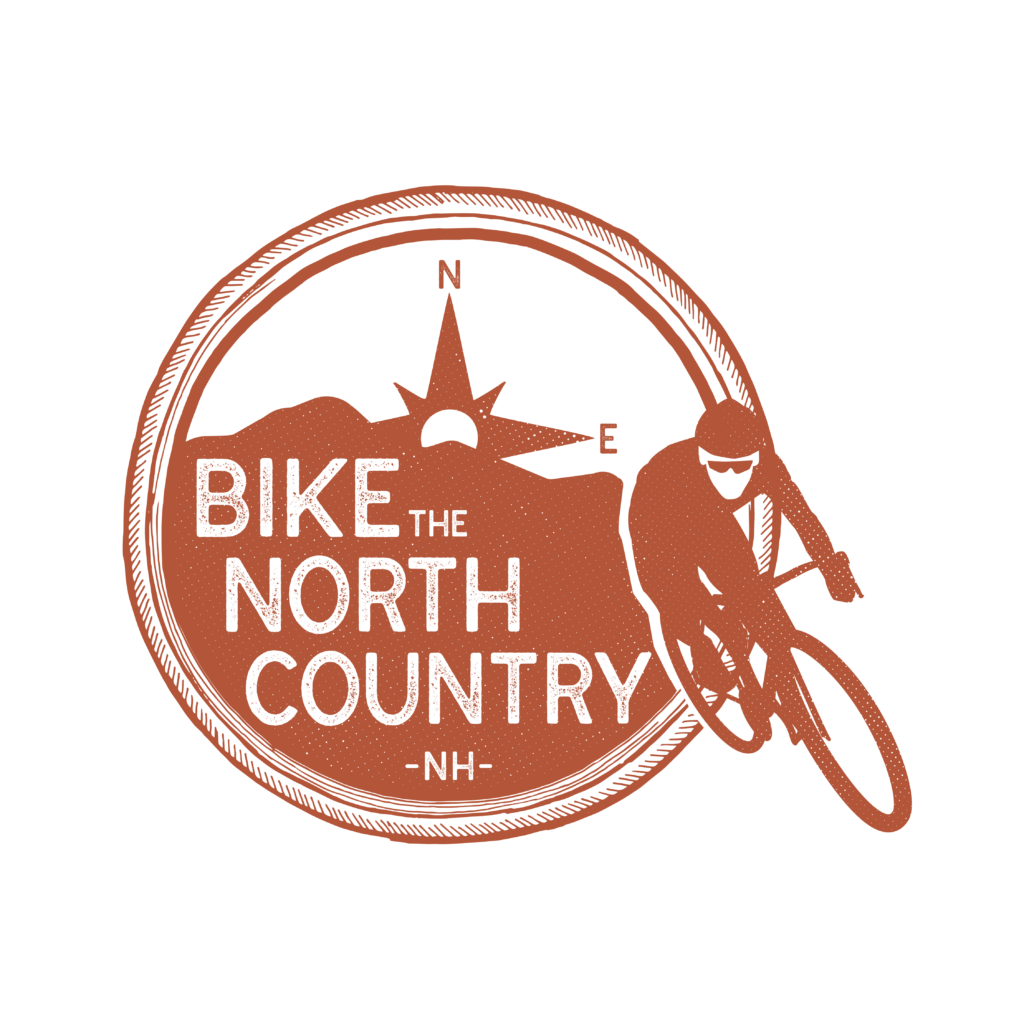
Bike the North Country
I’ve recently learned more about a great group up north. Bike the North Country is a 501(c)3 organization, funded through grants and donations. Their initiatives include promoting and increasing bike safety, education, and accessibility while also increasing bike awareness and making information available for all riders.
Bike the North Country is a year round cycling destination for all types of riders. Whether you’re new to cycling, riding as a family, or out for a killer workout, they have great rides for you, with almost 100 miles of mountain bike trails, many of which are groomed for fat tire riding in the winter. They also have some great rail trails and bike paths, and about 100 miles of great road routes that they’ll tailor to the type of ride you want. For those with disabilities and who want to be on the road or trails they have adaptive bikes, guides and lessons through their association with Adaptive Sports Partners. They also have great amenities for riders – a gear library, rental, repair and gear shops, pump and repair stands where you need them, information kiosks, bike racks, and of course everything a rider needs – coffee shops, breweries and amazing ice cream, and of course some great bike-friendly lodging facilities. Sounds like a bit of everything!
Bike the North Country also provides a “No Rider Left Behind” service. Ever have a flat tire or a mechanical that you just can’t fix while on the road or trails? E-mail them at BiketheNorthCountry@gmail.com or text them at 603-991-1413 and if you’re in the Tri-Town area (Bethlehem, Littleton, and Franconia) they’ll do what they can to get someone there to give you a ride home or to a bike shop. Riders helping riders – that’s what it’s all about!

Addendum — I have to salute what may be the best logo I’ve seen in months. Hooray for the Bethlehem Trails Association! I cannot look at their logo without smiling!
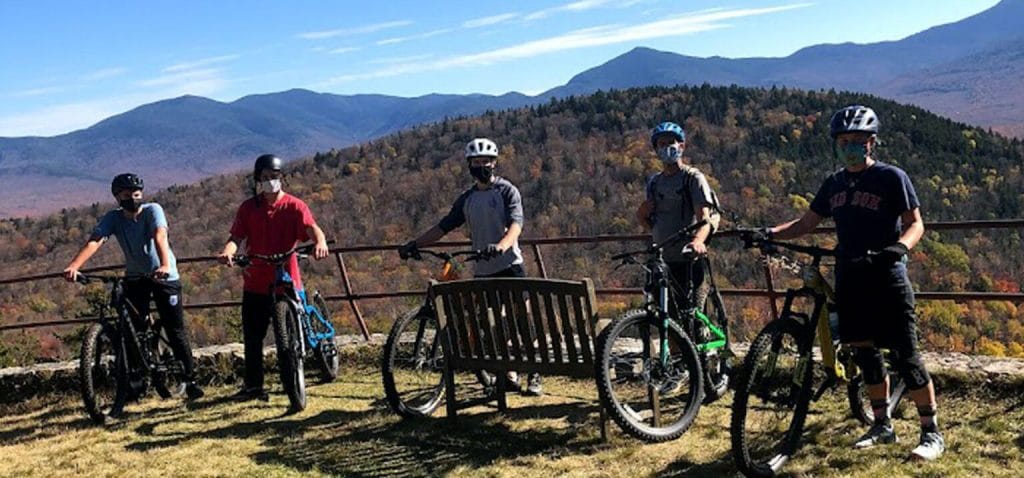
Madonna del Ghisallo
Never heard of her? Join the club! Sometimes it seems that being alive means constantly discovering how ignorant you have been. (Or maybe that’s just me?)
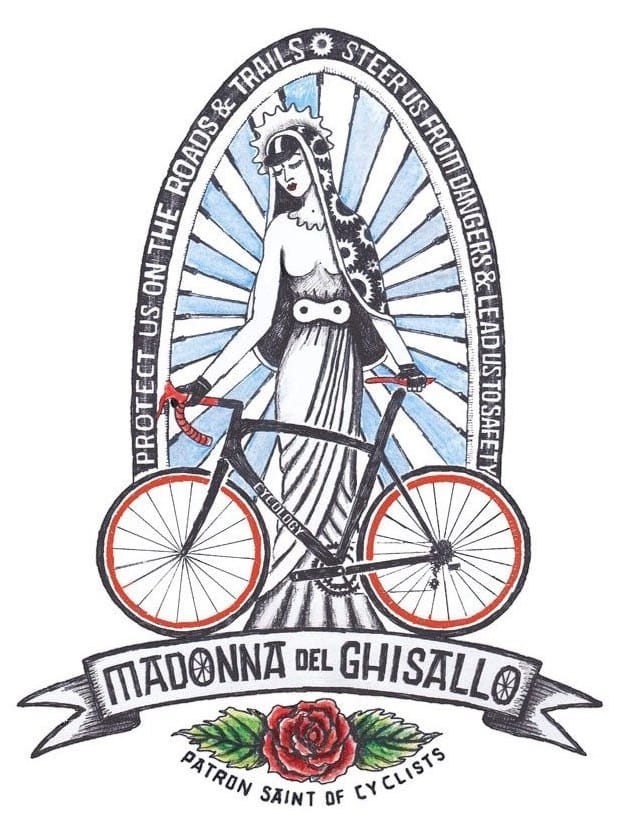
In 1949, in the village of Magréglio, Italy, near Lake Como, Father Ermelindo Vigano proposed that La Madonna del Ghisallo be declared the patron saint of cyclists. This was later confirmed by Pope Pius XII.
But what lead the Father to propose her sainthood?
In medieval times (according to legend), a count named Ghisallo was traveling near Magréglio, when he was attacked by bandits. He ran toward a nearby shrine, hoping for shelter. There he saw an apparition of the Virgin Mary, and she saved him from the robbers. This apparition came to be known as La Madonna del Ghisallo, a patroness of local travelers. The hill where this occurred also became known as Madonna del Ghisallo.
In later times, the geography of this hill lead to it being included in the Giro di Lombardia bicycle race, and also in the Giro d’Italia. A small church atop this hill overlooking Lake Como became a natural stopping point for cyclists.
After all that, the Father’s sainthood proposal now seems rather obvious.
Today a chapel on the hill contains a cycling museum with many artifacts. Perhaps most notable, the mangled bicycle ridden by local native Fabio Casartelli when he died in a crash in the 1995 Tour de France. Cycling can be risky! We need all the saints we can get!
Trips by Distance
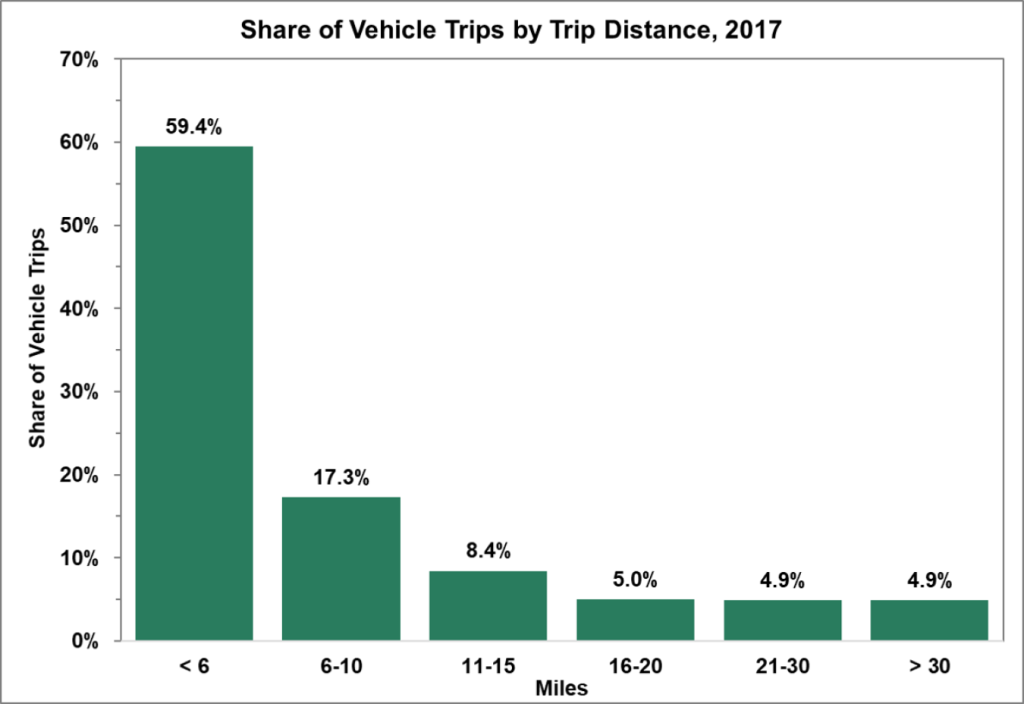
Most trips we take are short. I mean REALLY short. Less than six miles. Maybe too far to walk, but surely not too far to bike? Or scoot?
We all have our own myriad reasons for choosing precisely HOW we travel to our destinations. Maybe you’ve got a lot of stuff to deliver. Maybe you’ve got a bunch of kids to get to activities. Maybe its a sunny day and you want to have a nice walk or bike ride. Maybe road safety is a big concern. No judgement here.
But many of us *DO* have options for many of our trips, and we often forget that. For your next trip, pause a moment and think about the options YOU have. Remember, every time you choose to walk or take your bike instead of drive, that’s a little more exercise you’ve gotten, so a bit less time later at the gym or on the treadmill. Those saved minutes and extra calories burned really do add up!
Data provided by the US DoE on one-way household trips show that the majority (59.4%) of vehicle trips were less than six miles. In fact, three-fourths of all trips are ten miles or less. Another 8.4% of trips were between 11 and 15 miles, with the three longer trip distance categories about 5% each. Of all the trips, 95% were 30 miles or less.
Note: A vehicle trip is defined as one start and end movement from location to location in a single privately-operated vehicle regardless of the number of persons in the vehicle.
Source: U.S. Department of Transportation, Federal Highway Administration, National Household Travel Survey (link is external) website, accessed June 6, 2018.
Think about it. I don’t know about you, but for me, a bike ride always puts a smile on my face, way more than a car ride.
Non-Motorist Deaths
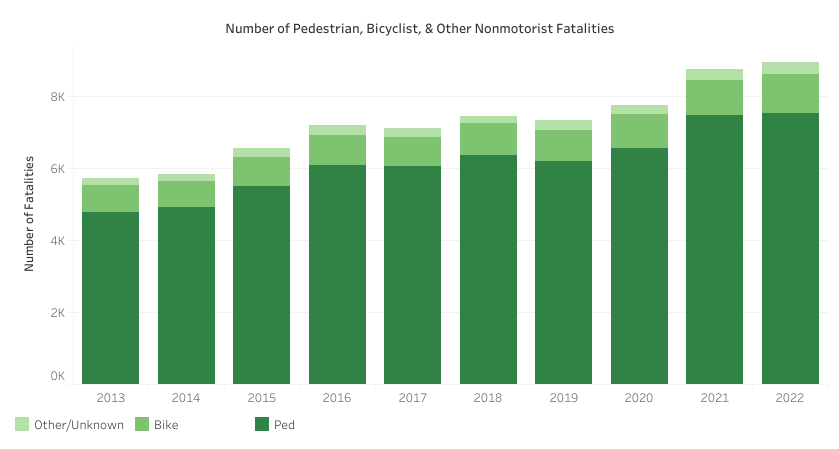
Sorry folks, but some charts are just depressing. This is going to be one of those. Above, we see that the death rate for non-motorists (i.e., pedestrians, cyclists, scooters, etc.) is climbing. This is an alarming trend, as they are climbing faster than other traffic-related deaths. The data can be seen here.
In 2013, non-motorist deaths represented 17.4 percent of all traffic fatalities.
By 2022, they accounted for 21.1 percent.
That suggests that while vehicles are getting safer for occupants, they are NOT for other public road users.
Lighting conditions are one major factor in pedestrian fatalities: 76.1 percent of pedestrian fatalities nationwide occur in dark conditions.
Time of day also plays a role. The hours from 6:00pm to 11:00pm tend to account for more pedestrian and bicyclist fatalities than other times of day.
Perhaps the steepest jump came in just the last two years. From 2020 to 2022, rates of non-motorist injuries are up sharply:
– for walkers, up 22.9%
– for bikers, up 18.8%
For some extra gloom, consider that research has demonstrated consistent under-reporting of crashes involving pedestrians and bicyclists. As many as 75 percent of pedestrian crashes and 46 percent of bicyclist crashes may be missing from police-reported crash data. Recently, North Carolina investigators found that for each pedestrian fatality, 17 more were involved in a non-fatal motor vehicle crash and 24 more were treated for their injuries in an emergency room setting.
Why this increase?
A report from the League of American Bicyclists notes that the above data show that 2022 was the deadliest year for cyclists EVER.
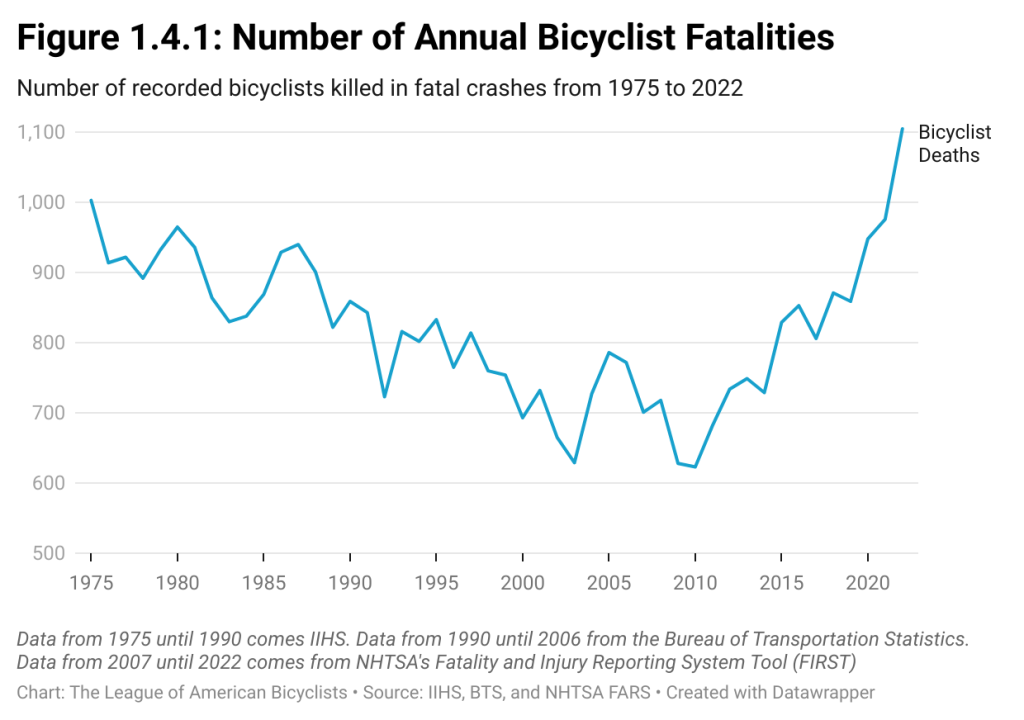
In exploring possible reasons behind this alarming rise, the League reports…
- This is NOT due to more people cycling.
- This is NOT due to more distracted driving (though data on this is sparse.)
- This is NOT due to large pickup trucks (though it could be due to SUVs)
- This COULD be due to poor bicycle infrastructure
They also suggest the following traffic improvements:
- automatic emergency braking systems on new vehicles
- safer roads w/ more protected bicycle infrastructure
- safer speeds, slower speeds
An article in Vox points out that there’s no single explanation for why US roads are getting more dangerous for non-motorists, but many factors contribute.
One is dangerous road design. Post WWII, new communities often were built with the idea that everyone would drive everywhere. Planners designed wide arterial roads for high-speed travel. Since then, those roads have only widened further, gaining more lanes, while more commercial development grew alongside them. In such areas, even minimal support for pedestrians (crosswalks, lighting) were often ignored.
Another factor is vehicle size and weight. US consumer have abandoned small cars in favor of behemoth SUVs and light trucks. Such vehicles provide the driver with reduced visibility and are more deadly to pedestrians when they strike them. This trend among vehicle consumers is not abating.
About all we can do at the current moment is ALL BE CAREFUL. Drivers, cyclists, walkers — EVERYONE WATCH OUT!
Call for Input
We very much want to hear from you! Do you have any questions or concerns? What topics would you like us to cover? Send your feedback our way and we’ll get on it! We want to ensure this column meets your needs.
Stay safe and warm and have fun out there!


